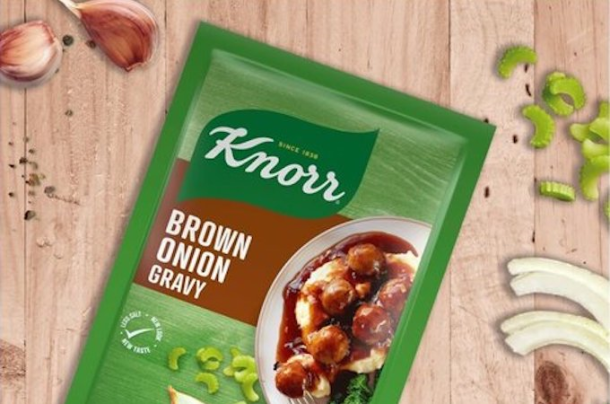Understanding the poultry trade
To understand the nature of poultry trade one needs some background, writes Kevin Lovell.In common with most agricultural commodities a relatively small percentage of the volumes produced are traded internationally. In the case of chicken meat this is about 13 percent of global production.
This is as most countries treat food production as primarily a local endeavour. Agricultural markets tend to have limited price setting, or forming, mechanisms. The best known is probably the Chicago Board of Trade which sets grain prices and which our local Safex market largely follows.
The international milk price is set by Fronterra, the New Zealand dairy company, and so on. In the case of chicken portions the global prices are essentially set in the US by the commercial businesses in that country. For whole bird prices Brazil is the price setter.
From a production perspective the US is the biggest producer, followed by Brazil and China (currently almost equal in size) and then the EU.
South Africa has about 1.5 percent of global production when measured at the meat level (excluding all offal and other by products).
Most traded
Poultry is currently the most traded meat type in the world with total poultry trade in excess of $18 billion (R274.4bn) a year. At least half of that is the left-over dark meat portions. From a production point of view fish (farmed and wild caught) is the biggest protein type with pork still slightly ahead of chicken for the second largest spot on the ranking.
Most of the products sold are consequential to the dietary preferences of the developed world. Since all chickens have to start off as a whole bird once slaughtered, understanding who trades in whole birds and how much they trade is instructive. The EU now exports a lot less whole birds as the export subsidies they used to enjoy were phased out in 2014. The US is essentially only selling what they do not manage to eat themselves – the dark meat (bone-in portions) and the EU is also engaged in the same practice.
Brazil is a true exporter in the sense that they produce more chickens than they plan to eat and then export these chickens in various forms all over the world. In China, Thailand and Brazil, the export of processed chicken products differs in that the labour costs are reduced.
Not many countries are involved in poultry trade and not all that many are the recipients of that trade. This is not truly a global production problem, but it is very much a problem for all the developing world markets as most trade is directed at these developing markets.
As I will explain below, this impacts the existing industries in those countries and inhibits the establishment and growth of local poultry industries.
As most countries want to feed themselves, and poultry (meat and eggs) are the main growth species for animal production, this has serous food security and developmental consequences.
Chicken breeds
There are a handful of commercial chicken breeds available all around the world that are raised on largely similar diets, in similar housing and processed in largely the same ways. So all chickens are more or less “equal”. This is a commodity product. If there is differentiation it is at the finished product level – things such as ready meals, marinated products and the like.
The starting point for cost comparisons are at the slaughtered whole bird level. A Dutch economist, Peter van Horne, who is attached to a research institute in the Netherlands, has been doing such comparisons for a number of years.
Recently he has included South Africa in this comparative study in co-operation with a local research institute, the Bureau for Food and Agricultural Policy (BFAP). (See the accompanying BFAP graphs)
From these graphs it is clear that South Africa is a cheaper producer than all EU countries, fairly close to the US costs and further apart from the costs of Brazil and Argentina. The prime reasons for South Africa’s higher costs compared with these countries relates to the feed cost as South Africa pays more for maize and soy oil cake than do the South Americans and the US.
South Africa does not yet produce soya beans to surplus quantities, which would bring down prices to closer to export parity levels and South Africa’s maize export parity price is consistently above the US Chicago Board of Trade price even when there is no drought to consider.
Looking at these graphs should beg the question as to how the rest of the world can send chicken parts to South Africa at such low prices.
Conceptually there is a big difference between value and cost. Costs are real for all businesses and if you cannot sell your goods and services for more than the cost thereof, for example, creating value in the consumer mind, your business will fail.
No fixed cost
In the developed world the perceived value of the dark meat is lower than that of the white (breast) meat in the consumer mind. So the US and EU industries indulge in creative accounting, which assumes that the whole birds from which portions are removed have no fixed production cost and that these costs only arise when the product is in storage.
Now to most people a whole bird is a finished product, not a raw material and any chicken portions should cost more than the whole bird did, on a per kilogram basis, as there is work involved in cutting the bird up and there are cutting losses as well.
Although this explanation is factually and economically sound it will not change consumer perception in the developed world markets – white meat has a higher perceived value and, in real terms, dark meat could only be sold at below its true cost of production.
Nonetheless, the demand for dark meat in the developed world, even at such low prices is insufficient to deal with the left-over or surpluses so produced. The US exports about 3.7 million tons of poultry a year, of which more than 90 percent is dark meat. Brazil, as a “Johnny come lately” to the global export markets is a follower of this creative accounting as it must also get rid of that which its own people, or others, do not wish to eat.
Brazil is a true exporter in the sense that they supply most of the whole birds required for the Middle East market and supply breast meat to the EU and elsewhere.
Although the EU may sell to South Africa, South Africa may not sell to them, so a form of market balancing is not open to South Africa. Even if South Africa could export to the EU, it could not yet be considered a true exporter as Brazil can be considered, since the country would still be receiving other people’s unwanted products.
There is very little exported to the US and even less to Brazil. The EU is both an importer (white meat) and an exporter (dark meat).
As it so happens, chicken is not a fashion meat in the developing world, but a basic meal and the dark meat portions are preferred because they have more taste and succulence.
This is because the fat levels are higher and the muscle structure is different as the bird has made more use of the leg muscles than the breast muscle – the birds are slaughtered before maturity and they do not use the breast muscles much to try to fly.
So essentially for the developed world to persist with its marketing model requires that there are countries poorer than them who will take any cheap chicken they can get. We are one such country.
Sold cheaply
Dumping, as a World Trade Organisation term, can mean one of two things – you sell the product for more in your home country than to an export destination, or that you sell it for less than what it costs to produce.
That is what is happening here. If these dumped products were sold cheaply then the economic argument becomes more subtle as although the products might be dumped, there might still be a net consumer benefit as cheap food is available.
This is not the case in South Africa as these imported products are sold mostly for more than the price of the local equivalents so there can be no consumer benefit.
The next point is to consider where employment is created in this industry. From the table above you can see that most jobs are created in the processing phase and then secondly in the farming phase with the least employment being created in the sales, marketing and distribution phase.
For every 10 000 tons of meat South Africa imports, the country loses 1 069 direct and indirect jobs. Most of the importers also distribute products, so many of the jobs in their businesses would continue or be transferred if they were not importing.
This is so as more chicken would be produced locally if we could afford to produce more and so more local chicken would need to be distributed.
* Kevin Lovell is the chief executive of the SA Poultry Association.
* The views expressed here do not necessarily reflect those of Independent Media.
News Category
- International retailers
- On the move
- Awards and achievements
- Legislation
- Wine and liquor
- Africa
- Going green
- Supplier news
- Research tools
- Retailer trading results
- Supply chain
- Innovation and technology
- Economic factors
- Crime and security
- Store Openings
- Marketing and Promotions
- Social Responsibility
- Brand Press Office
Related Articles

Warning of Eskom collapse

Knorr recalls brown onion gravy sachets

Eskom CEO shares good news about load-shedding

Tax warning for South African businesses


